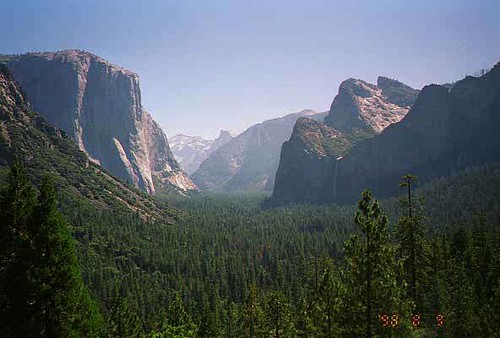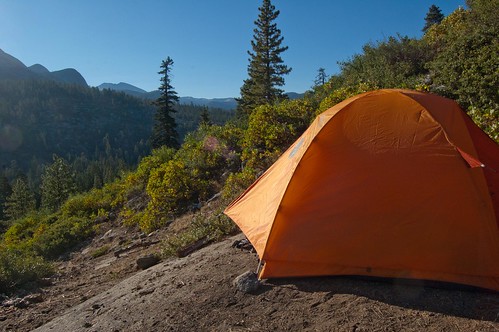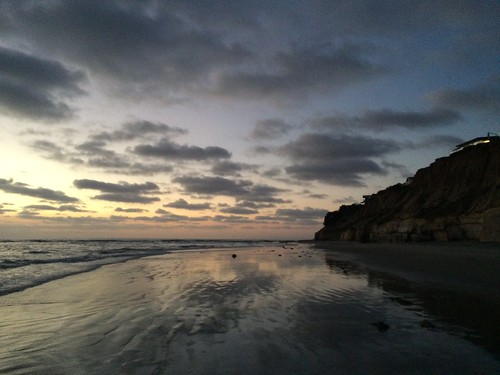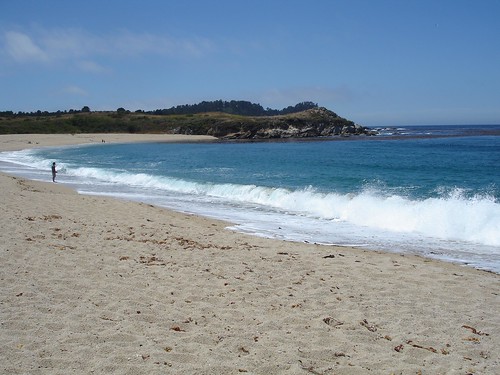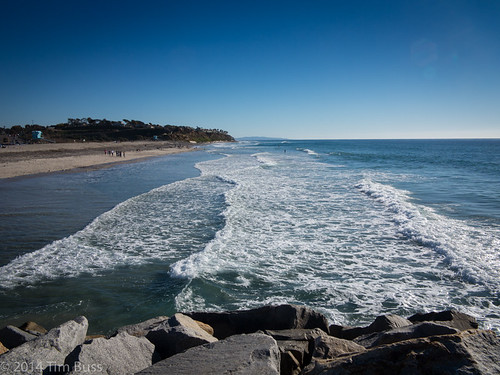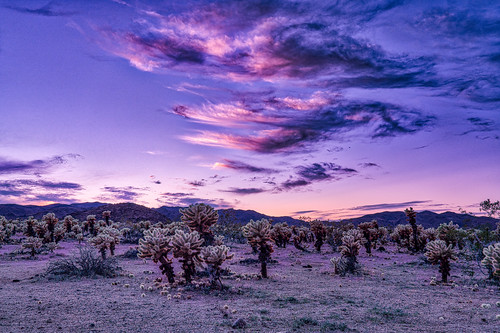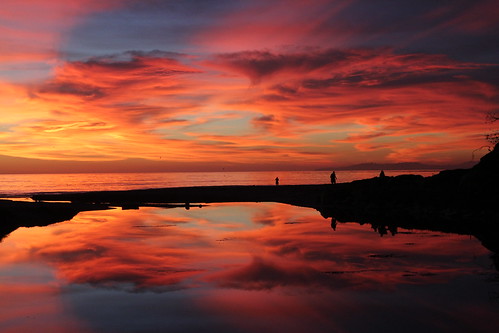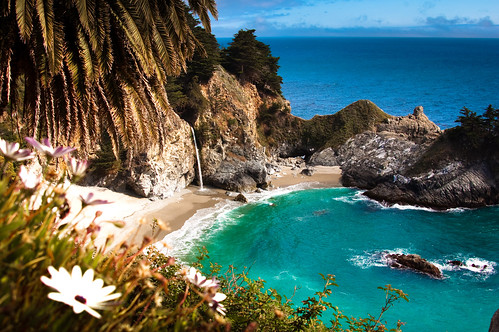Information about California camping
Your guide to California parks and camping
There’s little wonder why California is adored by local campers and those who visit from abroad. Navigate coastal routes and lounge with a book on idyllic state beaches that offer oceanfront camping. Or, travel inland to explore majestic redwood forests, iconic mountain ranges, and vast deserts.
The Golden State is home to 9 national parks and 280 state parks. Some campers will immediately gravitate to California’s most iconic parks, like Yosemite, Joshua Tree, and San Elijo. You probably already know all about these destinations. A few other notable ones include Sequoia and Kings Canyon for the giant sequoias, Death Valley for its salt flats, and Carpinteria for its pure awesomeness.
California’s regions and terrain
California includes four distinct geographic regions. Most of the state’s people live on The Coast, which is cool and foggy in the north and warmer in the south. The Deserts (the Mojave, Colorado, and Great Basin) see little rain and get extremely hot. The Central Valley is a vast and fertile region that’s a major agricultural producer. Meanwhile, The Mountains (including the Sierra Nevada and Coastal Ranges) reach peaks of up to 14,494 feet.
You should try to factor these regions and what they offer into planning your camping trip. Camping along The Coast allows you to see those fantastic beaches and coastal redwood forests—and take in cities like San Francisco, L.A., and San Diego. The Deserts offer an escape from the crowds and some exposure to the Old West alongside unique desert plants and wildlife—perhaps the antithesis of the vast garden known as The Central Valley. Some make a beeline for The Mountains for fishing, climbing, and alpine hikes.
Types of camping in California
Most families visiting California will car camp or RV camp at state and national parks. These campsites typically include a fire pit, grill, and picnic table. Most campgrounds have some accessible campsites. Shared showers, potable water, and (sometimes) hook-ups are standard. You can reserve campsites through ReserveCalifornia and Recreation.gov, but they sell out fast. We recommend scanning parks for cancellations if you can’t find an available campsite.
Some public parks offer yurts, cabins, and cottages (like the sort of magical beach cottages at Crystal Cove). Walk-in campsites can be easier to book if you’re tenting. However, wilderness sites in famous backcountry areas tend to be in very high demand. A small number of group campsites can accommodate family gatherings and youth groups. Other options include county parks, privately-owned campgrounds, and glamping.
California is unique because you can camp year-round in some parts of the state. The coast is best suited to off-season camping, given its mild climate. The mountains are lovely in the summer but can get chilly in the evenings (especially if you’re camping at higher altitudes). The desert is stunning during the spring and fall but can become oppressively hot in the summer months. Check the park’s official webpage before embarking on your camping trip. Doing so will help alert you to floods and forest fire risks or closures for park maintenance.
Nature and wildlife in California
Given California’s diverse geographic areas, you can expect to see vastly different plant life across the state. In the desert, you’ll see ocotillo reaching for the sky alongside healing aloe vera plants and old saguaros. On the coast, you’ll find redwoods, Bermuda Buttercups, and the Western Sword Fern. California Native Lupine, the striking California Poppy, and protective Purple Needlegrass are found in California’s Central Valley. You’ll find Tahoe Yellow Cress, ancient Giant Sequoias, and other alpine flowers in the Mountains. Other notable flora include California Fuchsia, Bearded Penstemon, Milkweed, Salvia, Oaks, Manzanita, Redbuds, Dogwoods, Deer Grass, Pink Muhly, Matilija Poppy, and Oregon Grape.
The variety of wildlife in California is equally vast. Some animals like Tule elk (thought extinct in the 19th century), the beautiful and reclusive San Francisco garter snake, and golden trout (California’s state fish) are unique to the state. Along the coast, you’ll find portly elephant seals (the boys get up to 5,000 pounds), sea otters, whales —and a few wild zebras near Hearst Castle. Black bears, bighorn sheep, ostriches, wild burros, and monarch butterflies also call California home. Learn more about California’s plants and animals through the California State Parks Foundation’s Plant Guide.
It’s genuinely challenging to offer suggestions on California’s landmarks. There are just so many! Here’s a shortlist: See the tallest trees on earth in Redwood National and State Parks. Visit the hottest and driest national park in the United States: Death Valley. Check out the beauty of Mount Shasta (a potentially active volcano). Marvel in the clear blue waters of Lake Tahoe. Or, explore The Channel Islands’ unique flora and fauna.
Activities and attractions in California
California’s parks offer a wide range of opportunities for adventurous campers. Pack your camera kit and channel Ansel Adams at Joshua Tree National Park. Pinnacles National Park also has some cool rock formations—and caves. If you like climbing, you’ll already have Yosemite on your list. Those who’d prefer to keep their feet on the ground might choose to explore Kings Canyon National Park’s foothills, canyons, valleys, and caverns.
If the kids are tired of nature (as they are prone to), you might pop into San Francisco to show them the Golden Gate Bridge and Alcatraz Island —and maybe grab a crab sandwich at Fisherman’s Wharf. (Be sure to set aside some time to visit the California Academy of Sciences.) Looking for stars? Meet the mouse family at Anaheim’s Disneyland Resort, or go star-seeking in Los Angeles’ Hollywood. The world-renowned San Diego Zoo is fun for the whole family—even if the steep hills on the bus tour sometimes feel a bit nerve-wracking.
A few historical and cultural sites in California you might like to add to your itinerary include: The historic San Juan Capistrano Mission; Former immigration station, Angel Island State Park; Former military base (now a national park), The Presidio of San Francisco; Monterey’s historic waterfront district Cannery Row (as made famous by Steinbeck’s novel). After you’ve taken in all those sites, you’ll probably be itching to take a load off around your campfire. 😉
Questions and answers about California camping
California Parks frequently asked questions
How do I get camping reservations in California?
California campsites are managed by several different entities. National Parks in California are typically reserved through Recreation.gov. State Parks can be booked on ReserveCalifornia. Some county, regional, and private parks can be reserved online or booked in person. For a more detailed summary of reserving campsites in California, read our article on How to Find Places to Camp in California.
Why is it so hard to find campsites in California?
Booking campsites has become more competitive all around. Part of this relates to increased interest in outdoor activities. This demand only increased during the pandemic, when international travel was restricted. Although that rush has somewhat abated, campsites remain in high demand.
The scarcity of campsite availabilities in California is amplified by the state’s high population. Parks near large Californian cities are in high demand—especially beachfront sites that are limited in number. Increased storm activity due to climate change has also resulted in some park closures. Seasonal and maintenance-related closures also impact the available pool of campsites. Essentially, demand vastly outstrips supply.
Additionally, online booking allows/requires campers to reserve sites many months in advance. Given the scarcity of campsites in California, campers often book all they can on launch day. A new law for California’s State Parks aims to make campsite supply more accessible. Additionally, many reservations get canceled and are re-released, allowing campers to find sites by monitoring parks for new cancellations.
How does ReserveCalifornia work?
ReserveCalifornia is California State Parks’ booking platform used to reserve campsites, permits, activities, and passes at state parks in California. The ReserveCalifornia system allows you to make reservations online or through its call center at (800) 444-7275.
To book campsites on ReserveCalifornia you’ll need to create a user account on that booking system. You’ll also need to determine which park you want to camp at, and when the dates you want start taking reservations. ReserveCalifornia operates on a 6-month rolling booking window, meaning that sites become available for booking on a daily basis, six months in advance.
For a step-by-step walkthrough of booking a campsite on ReserveCalifornia, read our post: How to book a campsite on Reserve California.
How much does it cost to reserve a campsite at California State Parks?
ReserveCalifornia charges a non-refundable $7.99 fee when you make a reservation. In addition to this fee, you’ll be required to pay a nightly rental cost for the campsite. California State Parks’ campsite rates vary based on the type of campsite (e.g., walk in, primitive, premium). The cost to rent most campsites will range between $10 and $70 a night. Rates for group campsites can be in the hundreds of dollars per night. That said, these campsites can often house large numbers of campers, who split the fee.
What time do campsites become available on ReserveCalifornia?
Campsites become available for booking 6 months in advance of the arrival date on a rolling booking window. So, every morning at 8:00 a.m. Pacific Time, ReserveCalifornia will make the new set of campsites available.
Let’s use an example to show how this works: On January 1st, July 1st becomes available for booking. This window then advances the following day, meaning that July 2nd opens for reservations on January 2nd. Your booking may extend past that date, up to the maximum stay rules for that park.
At popular parks, these campsites will get booked quickly. So, sign into your account in advance and be ready to book a few minutes before the clock strikes 8:00. Good luck!
What is the trick to getting campsites on ReserveCalifornia?
Campsites at California State Parks are in high demand—especially at some of the idyllic state beaches. As such, it helps to realize that there are only so many campsites, and your chances of booking one on opening morning aren’t great. There are ways to put the odds in your favor, though.
First, do your research well in advance. Determine which parks you wish to stay at, and when. Document the campsites that work for you, create an account on ReserveCalifornia, and check when those sites open for reservations. Be online a bit early that morning, with your mouse poised on the Reserve button of the site you’re interested in. Consider asking a friend to help do the same with other viable campsites at the park.
The more popular the park, the less particular you should be. This sort of flexibility can improve your chances significantly. Look for shorter stays, perhaps mid-week or in the off-season. Consider standard or walk-in campsites that are less popular than ones with full hook ups.
Even if the park you’re interested in gets fully booked by 8:01, you still have options. Sometimes folks change their mind before completing their reservation. In such instances, the site in their cart gets released within roughly 15 minutes. So, watch the booking site for any of these openings. Still no luck? Odds are that there will be many cancellations at that park in the months ahead. Set up a scan to monitor that park and notify you of any cancellations that become available.
How do I get campsite availability alerts for California State Parks?
Since 2017, Campnab has helped campers across North America find campsites by scanning for canceled campsite reservations at sold-out parks. Just visit the Campnab homepage. Then specify your camping parameters, like when and where you wish to camp.
Our park scanner then monitors your chosen campgrounds for any new cancellations. If/when it spots an opening that matches your search criteria, it alerts you via text message. You then need to act fast and book the newly available campsite before someone else does.
Is there a bot that automatically books campsites on ReserveCalifornia?
Many folks are suspicious of bots booking up all of the campsites. This is an understandable fear considering how quickly campgrounds sell out. At some popular parks like Yosemite National Park, it can seem almost impossible to book a campsite as they get reserved lightning fast.
In actuality, though, these sites are just getting reserved by regular humans. Look at it this way: If there are 500 campsites available at a park, and 20,000 people (the actual number is likely much higher) try to book on opening morning, any available spots will get picked up within seconds.
Also, the Better Online Tickets Sales Act was created to stop people or groups from automatically purchasing tickets en masse through the use of bots. Still unconvinced? You can watch this video about why we don’t consider bots a real concern.
Can I sell my camping reservation from ReserveCalifornia?
No—the California Department of Parks and Recreation prohibits the resale of reservations by any party other than the vendor/contractor authorized to sell such products. You can read detailed policies and updates on California State Parks’ Camping Information page.
Can I transfer my camping reservation from ReserveCalifornia?
No. California State Parks intends campsite reservations to be for personal use only. The department prohibits the transfer of permits to other parties. If found doing so, the reservation might be immediately canceled without notice, without any form of refund or reimbursement. The state might also block and terminate your account—and prevent you from creating new reservations or accounts.
For a detailed list of regions that allow or prohibit transferring campsite reservations, read our post: Can You Transfer a Campsite Reservation?
How do I cancel my camping reservation at a California State Park?
Thanks for asking! If you can’t use your reservation, canceling is the right thing to do. Cancelling your reservation allows another camper to make use of that campsite—which is awesome!
You can cancel your reservation by visiting ReserveCalifornia, signing into your account, and visiting the Your Reservations area. You can access this page in the top bar. Just click on your name and select it from the dropdown list. Then locate the reservation you no longer need, and cancel it. (Same-day cancellations can’t be made online.) You can also cancel by calling ReserveCalifornia’s Customer Call Center at (800) 444-7275.
Cancel as early as you can to avoid added fees. Cancelling after 6:00 the day before arrival results in a $7.99 cancellation fee. You’ll also forfeit one night’s reservation cost and the associated reservation fee.
What does the lock icon on ReserveCalifornia mean?
Reserve California re-releases some canceled campsites immediately. They hold others for release at a future date and time (often 8 AM the following day). If you see a lock icon on a campsite’s calendar in the booking system, it is likely being held for future release.
This icon is sometimes used for other reasons. For example, if a camper attempts to book that campsite it might show the Lock icon until the booking is completed. Also, in the last day or two before arrival, the campsite might show a lock icon if you are only able to reserve it in person at the park.
What is the new campsite law in California?
Assembly Bill No. 618 is a bill that was signed into law aimed at improving access to parks. This law encourages people to cancel campsites they don’t intend to use. It also introduces restrictions and penalties for those who fail to cancel in a timely manner.
The bill uses random drawings for reservations at five extremely popular parks. The new restrictions limit the length of reservations during peak seasons. Additionally, those who are no-shows for three consecutive reservations will be barred from using the online booking system.
How does Recreation.gov work?
If you plan to camp in the United States, you’ll need an account on Recreation.gov. This booking platform is the result of a joint project between Booz Allen Hamilton and an interagency coalition of 14 federal agencies (including the Bureau of Land Management, the National Park Service, the US Forest Service, and others). The platform offers tools, tips, and information, allowing you to research, plan, and book outdoor experiences.
If you’re looking to reserve a campsite, permit, or accommodation managed through Recreation.gov, you’ll need to create an account on the site. Doing so is quick and the site is intuitive and easy to use. For a step-by-step recreation.gov walkthrough, and tips on booking campsites, read Your ultimate guide to booking a campsite on Recreation.gov.
How much does it cost to reserve on Recreation.gov?
When you book a campsite, day-use permit, group site, lookout, or yurt, you’ll be charged a reservation service fee. These range from $3 in person to $8 online, and $9 through the contact center. There are also reservation service fees for permits, but these vary based on the park. Tickets also have minor service fees of $1 or $2—sometimes charged per person.
Given the vast number of parks and campsite types that can be booked on Recreation.gov, reservation fees vary. That said, you’ll generally see rates starting at around $20/night and going up to $60/night. These prices are affected by the type of site and available amenities. Group sites and roofed accommodations will cost more.
What time do campsites become available on Recreation.gov?
Most campsites can be booked up to six months before your arrival date. That said, there are a lot of parks listed on Recreation.gov, in several different states. As such, there is some variation between the release of campsites/permits depending on the one you’re looking for.
So, if you’re intent on camping on a specific date, be sure to double-check what the launch date is for that park, on recreation.gov. You can see the available booking window on each campground facility’s “Seasons and Fees” tab.
What is the trick to getting sites on Recreation.gov?
Campsites at popular parks book up quickly. For this reason, you should do some research. Determine where you want to camp, and when. Then find out when those dates open up for booking (typically 6 months in advance).
Sign in to your Recreation.gov account a half-hour before the sites release. You’ll want to be ready to click Reserve the second those campsites become available. Don’t hesitate for even a second, as many others are likely doing the same.
No luck? Don’t sweat it! There are lots of lesser-known parks that aren’t as challenging to get into. Do some additional research and consider alternatives. You can also set up a campsite availability alert for that park to get notified when others cancel matching reservations.
How do I get notified about new openings at national parks in California?
Throughout the season, a lot of campers’ plans change. When this happens, they typically cancel their reservations (they get a bit of a refund and open the site up for someone else to use). When the campsite reservation gets canceled, it gets re-released, and whoever spots it first can book that newly available site.
You can manually check recreation.gov for canceled campsites. However, this is time-consuming. We created Campnab as a convenience. Just visit campnab.com and create a scan noting your preferences. Once you’re finished, our system will monitor the booking system for new openings. Any time it spots a site matching your criteria, it’ll send you an alert via text message and/or email.
Can I sell my camping reservation from Recreation.gov?
No—Recreation.gov doesn’t allow you to resell camping reservations. If you can’t make use of your reservation, just cancel it and you might receive a refund of your reservation fees.
Can I transfer my camping reservation from Recreation.gov?
No—the name on the reservation must match that of the campsite’s primary occupant.
How do I cancel my camping reservation on Recreation.gov?
Log into your Recreation.gov account and click on your name from the top right of the screen. Then scroll down and select “My Reservations”. Locate the reservation and click Reservation Details to pull up a listing of your reservation. Then click the Cancel Reservation button.
Once you reach the Cancel Reservation page you’ll see the Chance and Cancellation Policies. If you have a refund due, the amount will be shown here. To complete the cancellation, click the Cancel Reservation button once more to confirm the cancellation.
